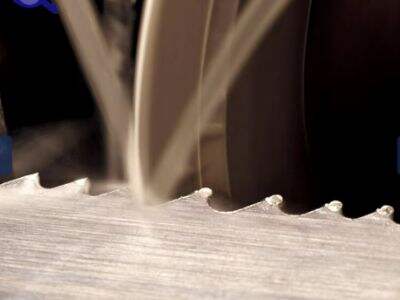Using a grinder or circular saw with a cutoff blade when you need to cut things such as metal, wood and even plastic can make the work go quickly and cleanly but the size of your blade may provide varying cutting speeds and results. That is because the size of the wheeled blade impacts upon how fast something cuts and upon what it takes to make a cut. Wait for it: we may provide some simple answers to this topic so that you understand everything better.
The effect of the size of cut off blade in cutting speed
The speed of the blade moving through the material is referred to as cutting speed. With a bigger diameter blade, it slices more material at once resulting in less needed cuts before the material is seperated. Conversely, with a more narrow blade size there is not as much of the surface against your material and potentially it may cut slower. That is to say the size of cut-off blade diameter will determine how fast one can make a cut.
How Blade Size Affects Cutting Load?
Cutting load — The amount of force this places on the material, as it cuts. The higher the cut off saw blades for metal of the blade, more cutting edges for the force to be distributed, thus a lower tooth count is acceptable. This can decrease the amount of force needed by each tooth, allowing to other teeth to slice through harder objects more easily. By contrast, the smaller blade of a slitting saw requires more marking out force applied to each tooth for the depth of cut. Cutting load may increase due to this and it will make difficult to cut through the materials.
Selecting the Appropriate Diameter For Superior Cutting Feel
This is where an easy way to make the decision about choosing the diameter of cut-off blade can be based on the material we are trying to blade cut and desired cutting speed. If you have softer materials, a bigger diameter blade may cut more effectively since it will allow you to make quick cuts with the least amount of effort. Larger diameter blades with fewer teeth can take more material off of the job at once, but on harder materials a smaller diameter blade with more teeth might be better suited to handle the increased cutting load. When chosen according to the job diameter, we can expect the best results and optimal cutting efficiency.
Analysis of Material Removal Rates with Blade Diameter
Material removal rate, just a volume of material we can remove in one unit time. In the cut off blades diameter, which in turn is an important part to explain cutting speed as we have seen. A wider diameter blade can take away more material in less time, and thus improves the material removal rate. On the other hand, smaller diameter blade may require more time to remove equivalent material hence leads to low material removal rate. Thus, understanding this relationship can help us to choose the correct blade size for our specific cutting requirements.
Getting the Most Out of Your Cut: Using the Right Blade Size
Proper blade size is the key to achieving maximum cutting performance for an application. Taking into account the hardness of the material, desired cutting speed and cut load can help establish what SWEAT cut off saw blades diameter will provide an effective, efficient cut. Correct blade size means easy, clean cuts in minimal time and effort.
The tool is being brought into contact at many points on the circumference. Cutting speed and cutting load This will help to optimize material removal rates, advance cutting performance and allow us to cut as efficiently as possible by selecting the correct blade size for the job. The next time you go to use an abrasive disk, remember to think about the diameters of the cut-off blades to optimize your work!


